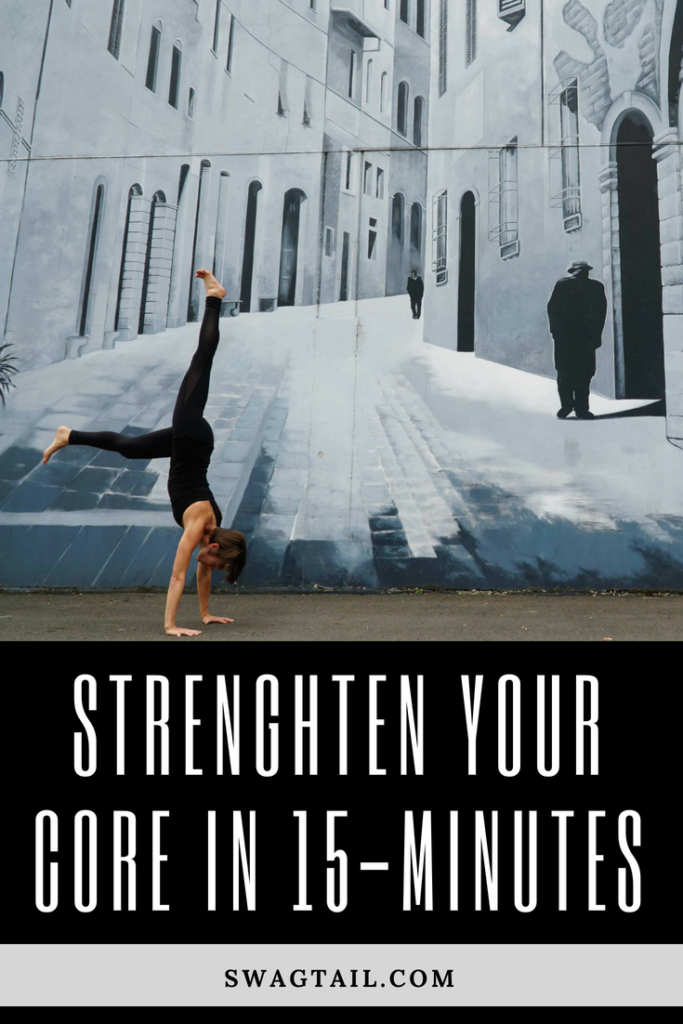 To maintain a healthy spine and move gracefully between yoga poses, it’s essential to strengthen your core. While you might think a strong center is only necessary for more challenging poses, like inversions, it is also necessary for better balance and stability in just about any posture. And, since most yoga classes only spend just a few minutes targeting this region, we’ve created this 15-minute sequence to focus here in depth.
To maintain a healthy spine and move gracefully between yoga poses, it’s essential to strengthen your core. While you might think a strong center is only necessary for more challenging poses, like inversions, it is also necessary for better balance and stability in just about any posture. And, since most yoga classes only spend just a few minutes targeting this region, we’ve created this 15-minute sequence to focus here in depth.
The sequence you’ll find below was photographed during our camping adventure at Silver Falls State Park in Oregon. This amazing gem has a 7-mile hiking loop that passes 10 magnificent waterfalls. There are also over 35 miles of backcountry trails to explore on foot, horse, or mountain bike. It was a decade since our last trip here, and we spent much of our trail time reflecting on the many adventures and blessings that have filled our journey in that time frame.
Since my legs did most of the work to propel me up and down the dirt pathways, it felt good to get on my mat and shift my attention to my core. However, after these 15-minutes of core work, I spent the next 45 lengthening my calves, hamstrings, and quads in juicy yin poses. Life’s about balance, right?
Give this sequence a try and see how the length and strength of your core brings more balance to your life and practice this week! Enjoy!
WHY BUILD CORE STRENGTH?
Yoga is all about finding and creating equilibrium. In the body, this manifests both length as well as strength in the tissues. For the mind, it means having a sense of lightness and steadiness in any given moment. In addition to a well-rounded yoga practice, you can add in small segments that focus on your core to boost your energy and build a stronger foundation for the other postures you take on your mat.
As you might recall from your teacher training, anatomy classes, or even our previous review of the core here at Swagtail, there are four basic muscle groups that form the core. You have the transversus abdominus, rectus abdominus, external obliques, and internal obliques that all work in harmony to support your spine.
When you strengthen your core, and learn to use these muscles properly, then you can:
- Move from one yoga pose to another seamlessly
- Build a foundation from which to take your body upside down
- Increase efficiency in your body movements
- Enhance your energy levels
- Tone the midsection
- Prevent low back pain, and
- Increase stability of the trunk for functional, everyday movements
TIPS FOR THIS 15-MINUTE SEQUENCE
While this sequence is not designed to replace a regular yoga practice, the poses below are strategically put together to strengthen the core as well as lengthen the spine and back side of the body. In order to get the most out of the sequence, we recommend you:
- Use a timer to ensure you use the full 30 seconds or minute in each pose. Amazingly, the breath can speed up when the body is challenged, and even half a minute can seem longer than you think.
- Film yourself so you can track your progress.
- Write notes in a journal if filming isn’t your thing. Notice how you can progress to harder versions of each pose over time.
- Try this sequence with a friend. It’s harder to skip on strength-building when someone’s doing it next to you.
- Work this sequence in the middle of your day, say just before or after work, to give yourself an extra spark.
- Slip in components of this sequence into your vinyasa flow classes for added core work when teaching.
- Have fun! If you are miserable along the journey, I’m not sure the end result will be as enjoyable or satisfying as you imagine.
(1) NAVASANA TO TADASANA
Length: 1 minute
Purpose: Navsana is a fantastic way to engage the core right off the bat, and strengthen the psoas muscles. Then, to move from this seated balance to tadasana, conscious movement from your center is needed. You also lengthen the low back as you move through malasana in the process.
Additional Notes:
- See if you can prevent momentum from moving you up and down. Move slowly and purposefully.
- Take a bent-knee variation of navasana if the full version is challenging at first. (Many days I still take this variation when I am tired, but still want to complete my sequence).
- Lengthen the breath as much as you can when moving. You can take one part of the breath with each movement–Inhaling to stand up and exhaling to move your way back down. Or, you can take a full cycle of breath in navasana, and then in tadasana, too.
(2) UTTHITA HASTA PADANGUSTHASANA D
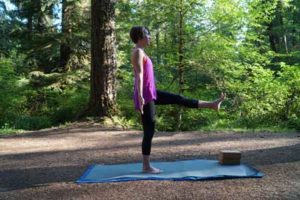 Length: 30 seconds each side (1 minute total)
Length: 30 seconds each side (1 minute total)
Purpose: This pose moves from a seated balance to a standing one. And, it emphasizes strength in the psoas. Additionally, this upright posture reminds you to keep the ribs in, the shoulders relaxed, and the spine tall. Essentially, it mimics everything that would need to be done upside down.
Additional Notes:
- Avoid leaning back with the upper body.
- Keep the hip on the standing leg hugging in toward the midline.
- Remember to just lift the leg as high as you can away from the floor, as the parallel position might not be accessible right away.
(3) UTTANASANA
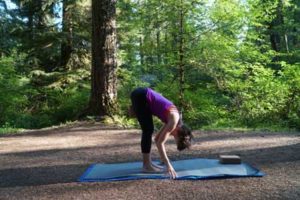 Length: 1 minute
Length: 1 minute
Purpose: This pose first serves as a resting pose. Plus, it elongates the hamstrings. This combination of core strength and back body length are needed to press up into handstand (or get into many other inversions).
Additional notes:
- Use a block between the thighs as a reminder to pull up on the pelvic floor.
(4) REPEAT UTTHITA HASTA VARIATION
 Length: 30 seconds each side (1 minute total)
Length: 30 seconds each side (1 minute total)
Purpose: Focus once again on strengthening the hip flexors.
Additional Notes:
- Perhaps try and start with the left leg first this time. Notice if there is any difference in your experience when doing this.
(5) REPEAT UTTANASANA
 Length: 1 minute
Length: 1 minute
Purpose: Enjoy another rest here. Focus on extending the spine and lengthening the entire line of the back body. Yet, even in this forward fold, can you press the floor away with your feet and feel energy pulling up from the ground to the pelvis.
Additional notes:
- Use a block between the thighs as a reminder to engage mula bandha.
(6) FOREARM PLANK
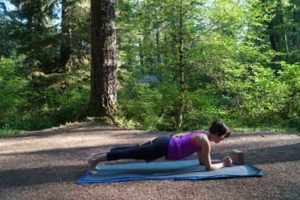 Length: 1 minute
Length: 1 minute
Purpose: This pose keeps the spine long and calls for muscle recruitment from the quads, core, and shoulders. Just make sure the elbows are just below the shoulders to provide ample support for the upper body.
Additional Notes:
- Use a block between the thighs (again) to feel the thighs inner spiral and hug toward the midline.
- Drop the knees to the floor, if needed.
(7) DOLPHIN
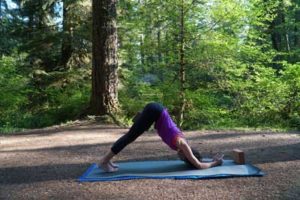 Length: 30 seconds
Length: 30 seconds
Purpose: Dolphin pose will lengthen the lats and hamstrings. It also continues to call on the upper body strength to hold the shape.
Additional Notes:
- Keep the block between the thighs for lower body engagement.
- Bend the knees to ease up the stretch on the hamstrings and lengthen the spine.
(8) L-SITS AND INVERTED TABLE
Length: 2 minutes TOTAL
Purpose: An L-SIT posture forces you to contract the abdomen in order to lift the hips away from the floor. Eventually, you will also have the strength in the hip flexors to lift the feet off of the floor, too. To work this sequence, hold supported or unsupported L-SIT for 30 seconds. Then, lift the hips and open the core and chest when taking inverted table for 30 seconds. Repeat these two holds so that each is held for one minute in length over the course of two minutes.
Additional Notes:
- Use blocks under the hands to make lifting away from the floor much easier.
- Keep heels on the floor to continue building strength as you work toward the full posture.
- The last 30 seconds in the inverted table can be substituted for a seated gentle backbend. This can alleviate tension in the arms, should any arise.
(9) FOREARM PLANK VARIATION
Length: 1 minute
Purpose: Moving back to the forearms gives the wrists a break. It also involves a bit more balance when lifting one leg at a time, and bringing the knee in toward the upper arm bone. Total body engagement is needed to perform this sequence.
Additional Notes:
- Keep the knees on the ground to simplify the pose.
- Repeating a static forearm plank is also an option.
(10) REPEAT DOLPHIN
 Length: 30 seconds
Length: 30 seconds
Purpose: While the upper body will still be working, lengthen the hamstrings and back once again. See if you can soften the belly, too, and give the core a bit of a rest in this mild inversion
Additional Notes:
- Place a block between the thighs to keep them hugging in, spiraling up and back, and engaging the TVA.
- Anahatasana or child’s pose are two additional variations for a rest.
(11) LOLASANA, VARIATION
Length: 1 minute
Purpose: Lolasana, also known as pendent pose, requires you to put your body in a tiny little package. Almost all parts of the body are called into action to make this pose possible. This pose strengthens the wrists, arms, shoulders, upper back, chest, and core.
Additional Notes:
- Use blocks under the hands to make lifting away from the floor much easier.
- Keep one foot on the floor for the first 30 seconds, then switch for the second half of the minute.
- Continually draw the belly button toward the spine and push the floor away.
- If you feel frisky, or have been practicing for a while, take both feet off of the floor for the full expression of the pose.
(12) SUPPORTED BRIDGE POSE
Length: 2 minutes TOTAL
Purpose: It’s time for another break to lengthen out the front of the body. If you have been using a block, place it under the rim of the pelvis to support this gentle backbend. Adding the knee to chest variation will further stretch out the hip flexors that were recruited just moments ago for lolasana and your L-SITs. If you choose to bend the knee, spend the first minute with the right knee in toward the chest and the second with the left. The alternate leg can extend to intensify the stretch as well.
Additional Notes:
- Remove the block entirely and hug alternating knees into the chest with the back and hips on the ground.
- Drop the knees toward one another to create space in the low back.
(13) HEADSTAND, WITH LEG LOWERS
Length: 1 minute
Purpose: All of the length of the spine, balance of the body, and strength of the core unites to get you upside down. Take sirsasana with any arm variation of choice. Once your legs are vertical, use the inhale to slowly lower the legs toward the ground. On the exhale, begin to lift them back to vertical. This movement may be big. It may be small. The whole point is to now strenghten the core from an inverted standpoint. The lifting and lowering of the legs simply enhances the strengthen needed of the hip flexors and TVA in the process.
Additional Notes:
- If headstand is not part of your practice, then repeat (a) forearm plank with block, (b) dolphin with block between your legs), (c) sirsasana, or (d) pincha mayurasana.
- You can also keep the block under the pelvis and lift the legs vertically to come into supported shoulderstand, variation.
- If a rest is in order, then take savasana.
(14) CHILD’S POSE
Length: 1 minute
Purpose: Rest, rest, rest. Celebrate your ability to move and grow and evolve in your practice. Allow the breath to be effortless, and soften the body entirely.
Additional Notes:
- Stay here longer than a minute if you’d like.
- Move into savasana after balasana to extend this and notice the full spectrum of sensation in the body.
- Take a few minutes to meditate after this sequence and observe what new thoughts and emotions have been sparked from your practice.


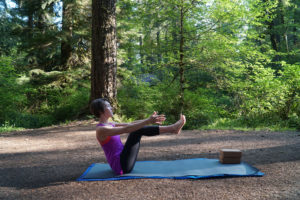
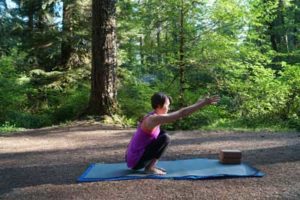
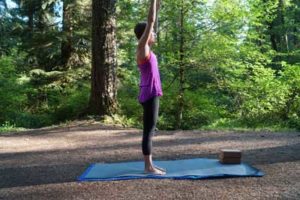
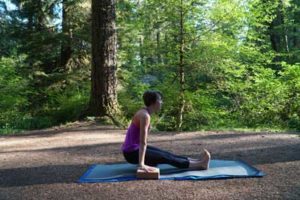
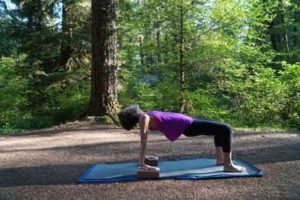
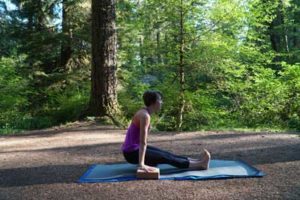
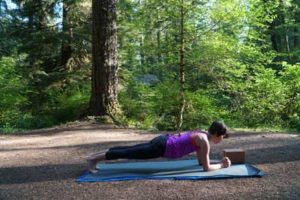
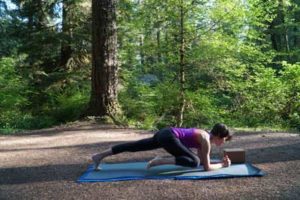
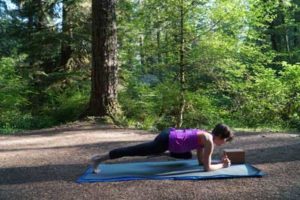
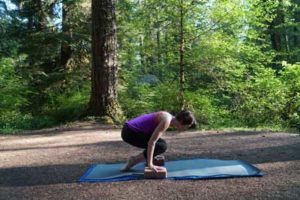
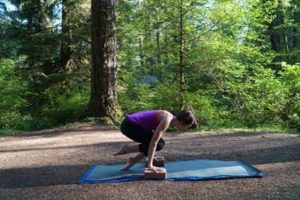
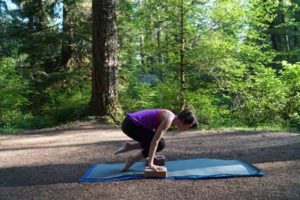
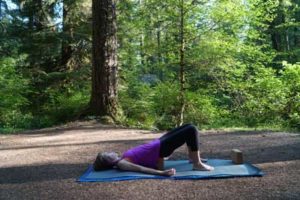
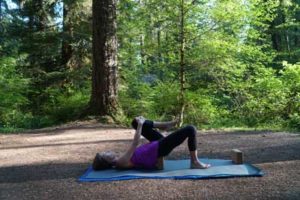
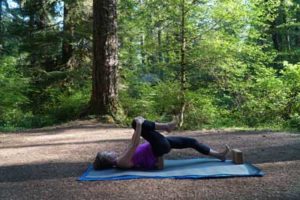
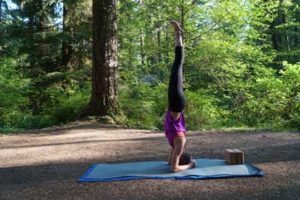
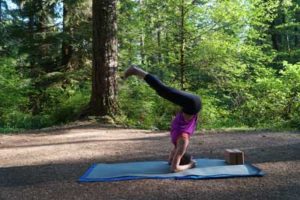
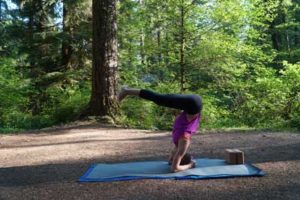



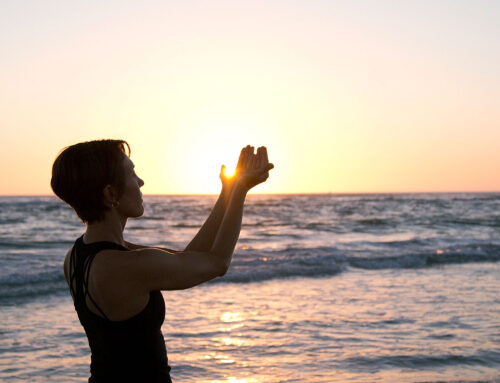
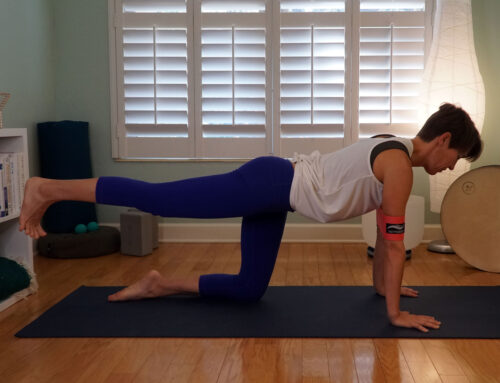

Leave A Comment